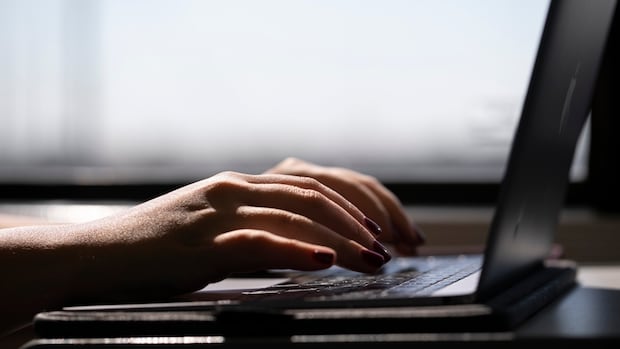Work-life balance? What’s that?
A new poll provides fresh numbers to illustrate what many exhausted working women have been reporting for decades — work-life balance isn’t exactly working for them.
The U.S. report from Gallup, released Wednesday, suggests that competing demands of work and home are part of the problem. Compared to the men surveyed, women were more likely to report having to address personal or family responsibilities at work daily, or several times a day, and conversely, were more likely to say they needed to address job-related responsibilities outside of working hours at least daily.
“These daily disruptions — whether it be scheduling dentist appointments for children between meetings or answering emails after hours — are associated with higher levels of stress, worry and burnout,” noted the report.
“For many working women, trying to find balance between work and life feels like a perpetual tug-of-war with each side demanding an increased level of presence and attention.”
On top of that, working mothers are more likely than working fathers to say they have declined or delayed a promotion at work because of personal or family obligations, and mothers are more likely than fathers to “strongly agree” that they are the default responders for unexpected child-care issues.
Gallup also found that working mothers are nearly twice as likely to say they have considered reducing their hours or leaving their jobs altogether because of child-care issues compared to working fathers.
These and similar sentiments are often expressed by working moms on the social media platform TikTok, where there are 1.2 million videos tagged #workingmom. The mental load, being the default parent, and guilt are common themes.
“We’re working moms. Don’t ask us if we’re OK. We’re not!” said TikToker “Honestly Kaitlin” in a video last year with 4.4 million views.
“We’re working moms, but nobody calls my husband a working dad,” one person wrote in the comments, along with an upside-down smile emoji.
The ‘double burden’ of paid and unpaid work
The Gallup findings are based on four separate surveys of nearly 20,000 adults ages 18 and up working full time or part time in the U.S., conducted between February 2023 and October 2024. The margin of error for each wave differs due to sample size, but is in the range of +/-1.0 to 1.5 percentage points.
The report also mirrors the data in a recent Canadian report by the Vanier Institute of the Family. Data analyzed by the independent national think-tank shows that women still take on the bulk of domestic duties, including child care, and that women are more likely than men to work part-time or choose self-employment in order to balance family life.
As for domestic duties, the Vanier Institute noted that, regardless of their labour force participation and changes in recent years, women continue to do the majority of household work in Canada. The institute analyzed Statistics Canada’s time-use data from 2022, and found that, among people who worked from home, women spent about 40 minutes more per day on unpaid housework than men.
The same trend was found for child-care duties among parents. When parents worked from home, mothers spent an average of about 52 minutes more per day with children than fathers did. And if both parents worked outside the home, they spent less time with their children than those who telework. But of those parents, mothers still spent more time with their children than fathers, again by about 52 minutes per day.
“The ‘double burden’ of paid and unpaid work can affect the wellbeing of women, who are left with a greater overall workload and less time to rest,” noted the report, released in November.
WATCH | What’s the motherhood penalty?
What is the ‘motherhood penalty’?
Sonja Baikogli and Jen Murtagh, founders of Maturn, which supports mothers with their transition into motherhood, are putting the spotlight on the motherhood penalty — a significant hurdle faced by working mothers, hindering their path to achieving gender equality.
Both the Gallup and Vanier reports are just the latest in decades of research that have highlighted the gender imbalances in work.
For instance, Statistics Canada time-use data from 1995 showed that women had to make “radical adjustments” to their workdays when they became mothers.
Part of this was increasing the length of their work day, which Stats Can defined as time spent on both paid and unpaid work. Contrarily, the report noted, there was very little change in the work day of boomer men.
“They continued to spend virtually the same amount of time pursuing paid work.”
 Kristy Denette, back left, tries to work from home as her two children, Maverick, five, and Peyton, seven, do online schooling at the kitchen table in their home during the COVID-19 pandemic in Mississauga, Ont., on Jan. 5, 2021. (Nathan Denette/The Canadian Press)
Kristy Denette, back left, tries to work from home as her two children, Maverick, five, and Peyton, seven, do online schooling at the kitchen table in their home during the COVID-19 pandemic in Mississauga, Ont., on Jan. 5, 2021. (Nathan Denette/The Canadian Press)
Investing in well-being of women
Changing workplace culture and prioritizing well-being can improve the problem, according to Karen Guggenheim, creator of the World Happiness Summit, an annual wellbeing conference where the Gallup data was presented.
“Why do we have to choose? Why are we creating environments where people have to make a choice between being the most amazing parent, partner, friend, daughter, sister, whatever, and also thriving at work?” she recently told the Associated Press.
“Investing in women’s well-being isn’t just good business — it’s a blueprint for societal progress.”
But Allison Venditti, a human resources expert in Toronto and founder of Moms at Work, Canada’s largest advocacy group for working mothers, says she’s sick of surveys, as well as the common refrain that women need more workplace support and flexibility.
As others have also noted, this mindset contributes to the gender wage gap because it anticipates that it’s women who will work fewer hours. Instead of focusing solely on creating more supportive workplaces for mothers, Venditti says she’d like to see reports on how workplaces should deal with the fact that men do half the amount of unpaid care work as women.
“Where is the action plan that says ‘We are looking at the 300 studies that show women are underpaid,’ ” Venditti told CBC News.
“Companies have had more than one chance to fix this — and honestly, I am sick of even surveying women unless you plan on using it to legislate change or do something to help.”




